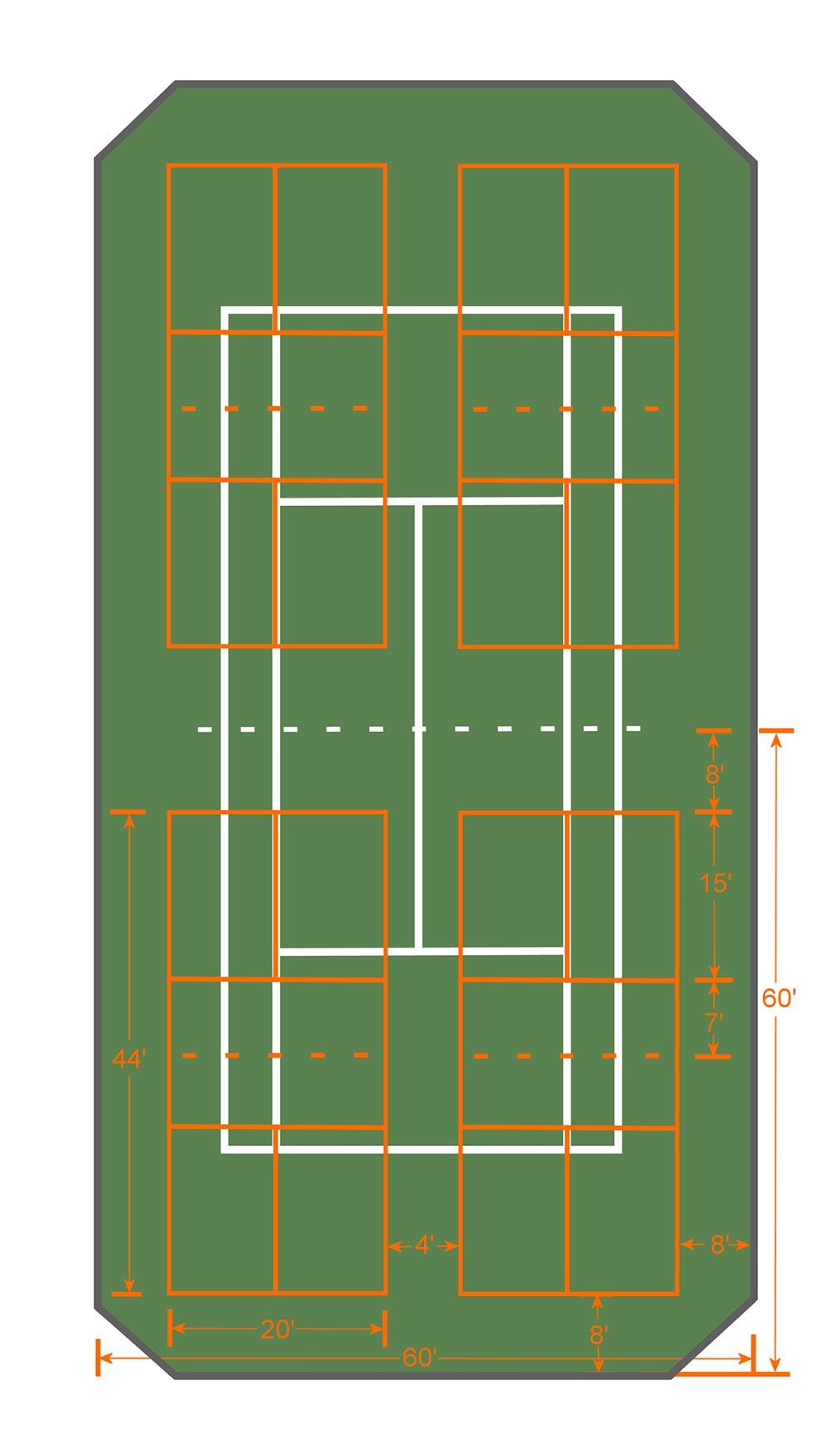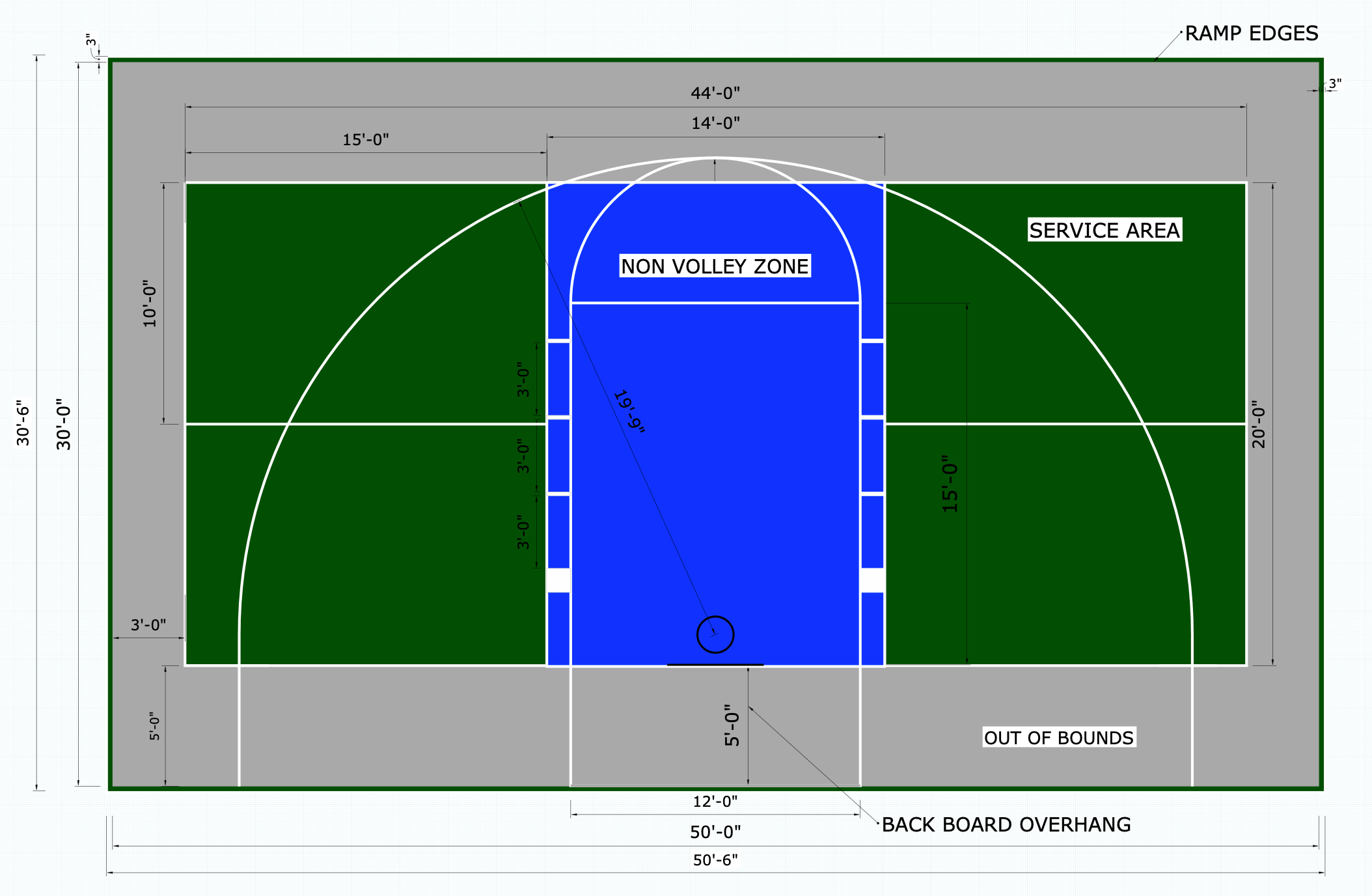Just How Illinois and Midwest are Leading the Way in Pickleball Courts Layout & Construction
Just How Illinois and Midwest are Leading the Way in Pickleball Courts Layout & Construction
Blog Article
Key Variables in the Building of Pickleball Courts: From Website Selection to Last Finishes
The construction of pickleball courts includes a variety of essential factors, beginning with the option of an ideal site that balances ease of access with environmental considerations. Necessary components such as court dimensions, surface area products, and drain systems considerably influence not only the high quality of play but additionally the longevity of the center.
Site Option Requirements
When embarking on the building and construction of pickleball courts, it is necessary to pin down the website choice requirements that will guarantee ideal playability and ease of access. The location must be easily obtainable for gamers, preferably located near suburbs or recreation center, to encourage participation.
In addition, the surface must be level and stable, as uneven ground can bring about safety and security threats and impact gameplay. Appropriate drain is also crucial; selecting a website with great water runoff will certainly help maintain court problems during adverse climate.
One more important consideration is the schedule of utilities. Access to electricity and water is essential for illumination and maintenance objectives. Furthermore, proximity to parking centers is important, helping with very easy gain access to for gamers and spectators alike.
Ecological aspects can not be overlooked; all-natural shade from trees can improve player convenience, while exposure to prevailing winds might interrupt play. Last but not least, zoning guidelines and community support need to be thought about to ensure that the job straightens with regional standards and receives the backing it requires for successful application. By carefully examining these standards, stakeholders can create an inviting and practical setting for pickleball enthusiasts.
Court Dimensions and Format
To ensure optimum gameplay and adherence to laws, the dimensions and layout of pickleball courts need to be meticulously defined. A conventional pickleball court gauges 20 feet in size and 44 feet in size for both songs and doubles play. The recommended design consists of a non-volley zone, typically described as the "cooking area," extending 7 feet from the web on either side. This area is crucial, as it influences player positioning and shot option - Illinois and midwest.
The web elevation is evaluated 36 inches at the sidelines and 34 inches at the facility, developing a mild dip that influences round trajectory. Court markings are just as crucial; lines must be 2 inches large and unique in shade to make sure exposure.
Furthermore, a buffer zone bordering the court is suggested, commonly expanding 5 to 10 feet beyond the sidelines and baselines to suit gamers' motions and enhance safety. Correct design and dimensions not only make certain conformity with main policies but additionally improve the overall having fun experience, suiting both leisure and competitive play. Careful preparation in these areas is paramount to the effective building of pickleball courts.
Surface Product Options
Choosing the right surface area material for pickleball courts is crucial for making certain ideal gamer efficiency and safety. The selection of surface can significantly impact gameplay, including round bounce, traction, and gamer comfort.
There are numerous options readily available, each with its unique features. Asphalt is a prominent option as a result of its sturdiness and low maintenance needs. It offers a strong playing surface area that can withstand different climate condition but may call for periodic resurfacing.
Concrete is one more widely utilized product, offering exceptional long life and a smooth surface. It permits consistent ball bounce however can be tough on players' joints, making it less preferable for lasting play without proper cushioning.
For those looking for boosted comfort and shock absorption, cushioned acrylic surface areas offer a viable option. These surface areas incorporate a base layer with an acrylic topcoat, giving boosted grip and a softer feel, which is beneficial for lowering the danger of injuries.
Finally, artificial turf is obtaining traction, especially for multi-purpose centers. Its adaptability and lower upkeep requires make it an eye-catching choice, though it might not provide the same round response as traditional difficult courts. Cautious factor to consider of these options will certainly guarantee an ideal having fun environment.
Water Drainage and Lighting Considerations
Correct water drainage and reliable lights are essential components in the construction of pickleball courts, considerably influencing both playability and safety. Adequate drainage systems prevent water buildup, which can lead to slippery surfaces and damages to the court framework. A properly designed drain plan incorporates sloped surface areas and ideal products to promote water stream away from the playing area - Illinois and This Site midwest. This not their explanation just maintains the stability of the court however also decreases downtime as a result of inadequate weather.
Lights is similarly vital, specifically for courts intended for night usage. Proper illumination boosts visibility, making sure that gamers can see the sphere plainly and decreasing the danger of crashes. The placement of illumination components should be tactically prepared to get rid of shadows and supply even circulation of light across the court. LED lights are recommended for their energy performance and long life, offering brilliant lighting while lowering operational costs.

Last Surfaces and Upkeep
After attending to water drainage and lighting factors to consider, focus transforms to the last coatings and recurring maintenance of pickleball courts. Illinois and midwest. The choice of surface product is important, as it affects both playability and resilience. Typical options consist of acrylic coatings and specialized sports surfaces that provide optimal grip and cushioning. These surfaces must be applied in multiple layers to guarantee resilience against weather condition aspects and use.

Seasonal maintenance could my company include resurfacing every couple of years, relying on usage and ecological factors. Appropriately maintaining internet, court lines, and bordering locations is equally crucial to provide a safe and delightful playing experience. By buying top quality finishes and adhering to an organized upkeep schedule, facility owners can guarantee their pickleball courts continue to be in superb condition for many years ahead.
Verdict
In conclusion, the successful building and construction of pickleball courts depends upon meticulous interest to a number of vital variables. Site choice must focus on availability and surface security, while court measurements and layout must adhere to ideal requirements for gameplay. The option of surface area product significantly influences player safety and performance. Efficient drain and sufficient illumination contribute to court longevity and visibility. Finally, quality finishes and a durable upkeep routine are necessary for preserving the court's problem, enhancing the general experience for gamers and spectators alike.
Report this page